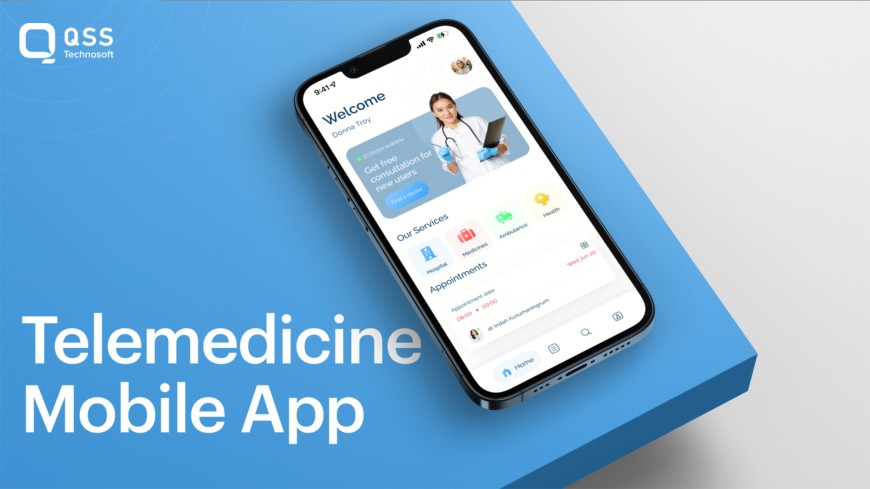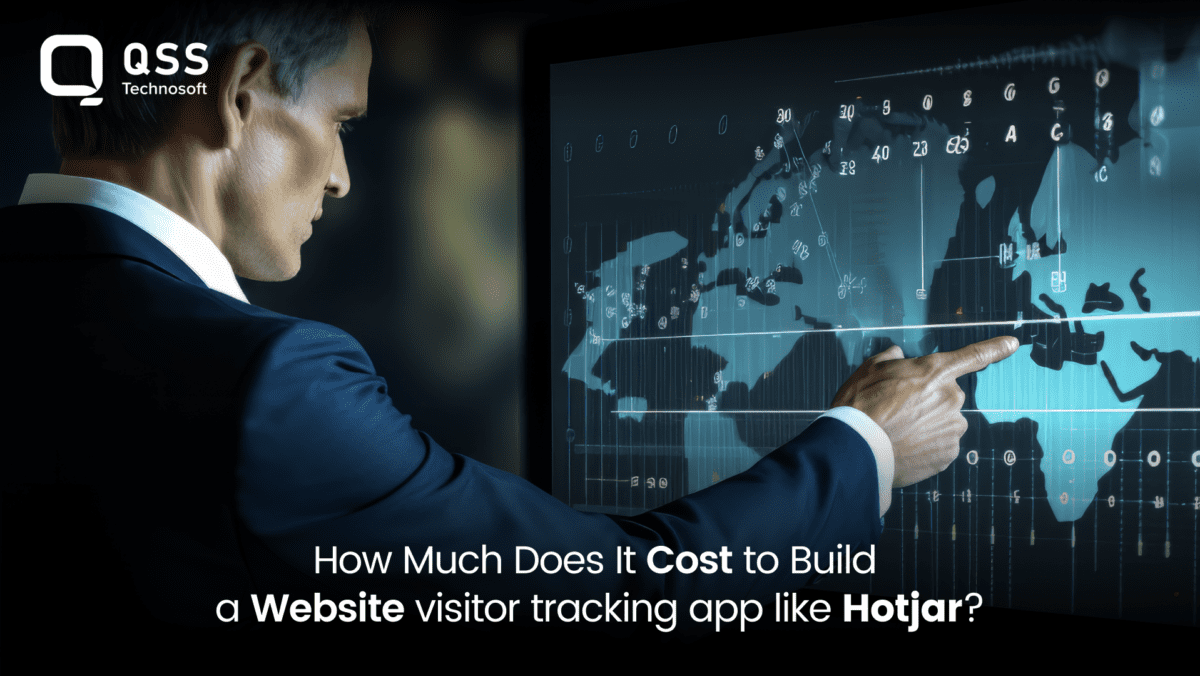In times there has been a change, in the global healthcare industry largely influenced by technology. One noteworthy development is the emergence of telemedicine which uses communication to deliver services remotely. This article will explore the complexities of creating a white-label telemedicine app with a white-label approach. We will discuss the steps involved in the development process, highlight features and consider the associated expenses.
- The Rising Tide of White-Label Telemedicine App
White-label telemedicine apps can help revolutionize healthcare. These products provide a ready-to-deploy solution that healthcare providers and organizations can customize to reflect their brand. Remote consultations become a breeze with features like video calls, chat, and voice calls allowing easier access to healthcare on the go.
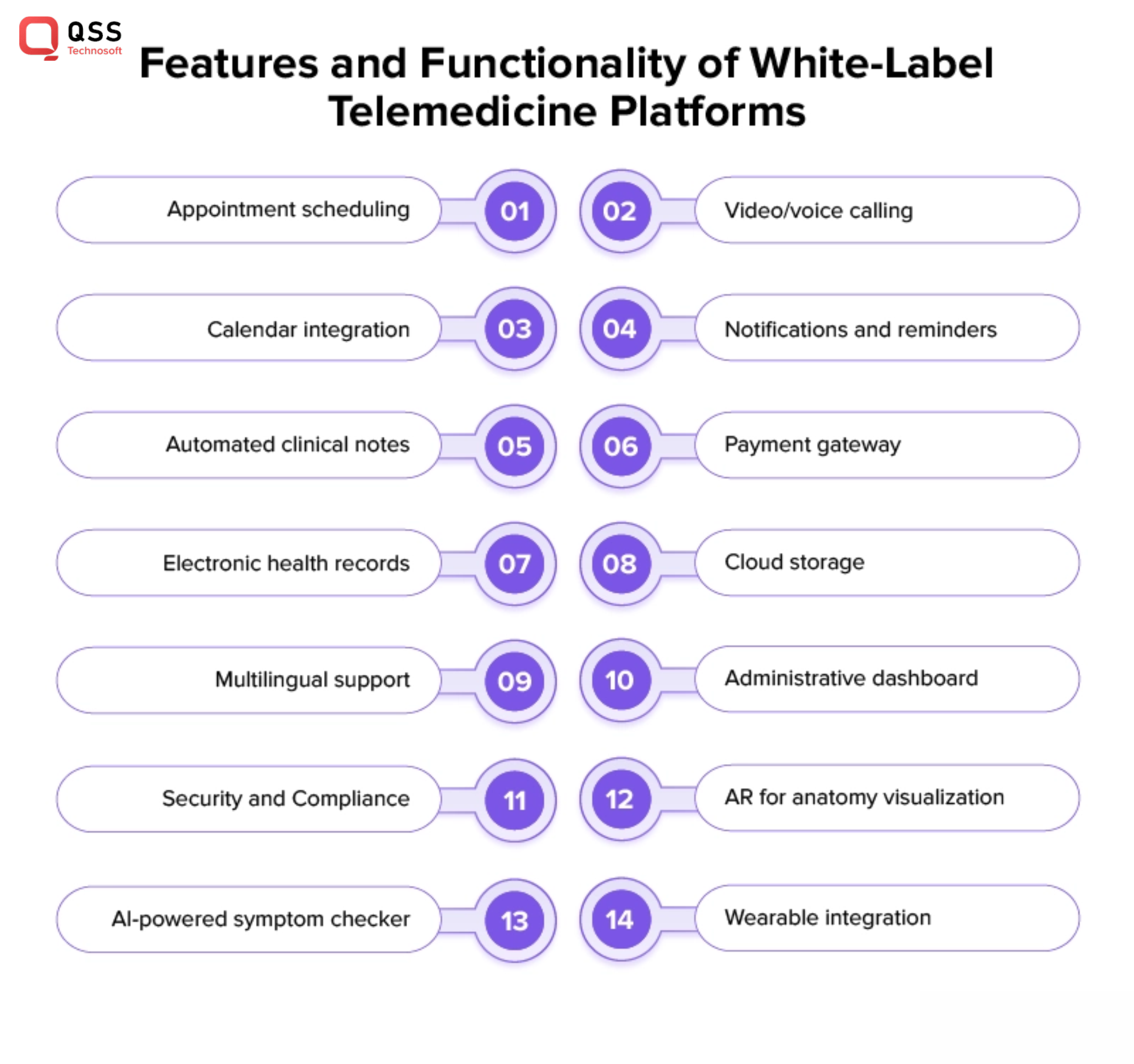
Compared to traditional telemedicine solutions, white-label apps offer a much-improved experience that merges personalization and convenience giving healthcare professionals a reliable way to establish their digital presence. No need to worry about extensive mobile app development resources anymore. The result is happier and more connected healthcare users.
Before delving into the intricacies of developing a white-label telemedicine app, let’s first understand the current state of the telemedicine industry through some compelling statistics:
Global Telehealth Market Growth
According to a report by Fortune Business Insights, the global telehealth market is expected to reach USD 559.52 billion by 2027, exhibiting a CAGR of 25.2% during the forecast period.
Patient Adoption of Telemedicine
A survey conducted by McKinsey & Company found that the adoption of telehealth services among patients in the United States increased from 11% in 2019 to 46% in 2020.
Remote Patient Monitoring
The global remote patient monitoring market is projected to grow at a CAGR of 17.1% from 2021 to 2028, as reported by Grand View Research.
Telemedicine App Usage
According to a study published in the Journal of Medical Internet Research, the usage of telemedicine apps increased by 300% in the first quarter of 2020 compared to the same period in the previous year.
The Process of Developing a White-Label Telemedicine App
1. Market Research
Before embarking on the development journey, thorough market research is crucial. Identify the target audience, analyze competitor apps, and understand the unique needs of the healthcare sector you aim to serve. This will help in tailoring your telemedicine app to meet specific demands, giving it a competitive edge.
2. Compliance and Regulations
Navigating the complex landscape of healthcare regulations is paramount. Different regions have varying compliance standards, and adherence to these regulations is crucial for the success of your telemedicine app. Ensure that your app complies with data protection laws, patient confidentiality, and other relevant healthcare regulations.
3. Choose the Right Technology Stack
Selecting the appropriate technology stack is a critical decision in the development process. Factors such as scalability, security, and compatibility should be considered. Popular choices for telemedicine app development include cloud-based solutions, real-time communication APIs, and secure databases.
4. User Interface (UI) and User Experience (UX) Design
The success of a telemedicine app hinges on its usability and appeal. Collaborate with experienced designers to create an intuitive and user-friendly interface. Ensure that the design facilitates easy navigation for both healthcare professionals and patients, fostering a seamless user experience.
5. Development
Engage a skilled development team with experience in healthcare app development. The development phase involves creating the app’s architecture, integrating features, and ensuring robust security measures. Agile development methodologies can be employed to facilitate iterative development and quicker adaptation to changing requirements.
6. Testing
Thorough testing is essential to identify and rectify any bugs or glitches. Conduct usability testing, security testing, and performance testing to ensure a smooth and secure user experience. Testing should involve simulated scenarios to assess the app’s functionality under various conditions.
7. Deployment and Maintenance
Once the app is tested and refined, it can be deployed on relevant platforms such as the App Store and Google Play. Continuous maintenance is crucial to address emerging issues, implement updates, and ensure the app remains compliant with evolving regulations.
III. Essential Features of a White-Label Telemedicine App
1. User Authentication and Authorization
Implement robust authentication and authorization mechanisms to safeguard patient data. Two-factor authentication and secure login processes are essential components to ensure the confidentiality of sensitive health information.
2. Appointment Scheduling
Facilitate seamless appointment scheduling for both patients and healthcare providers. Integrate a calendar system that allows users to book appointments, receive reminders, and synchronize their schedules with the app.
3. Video Consultation
The core feature of any telemedicine app is the ability to conduct video consultations. Ensure high-quality video and audio streaming, along with additional features like chat options and file sharing to enhance communication between healthcare professionals and patients.
4. Electronic Health Records (EHR) Integration
Integrate EHR systems to enable healthcare providers to access and update patient records securely. This feature enhances continuity of care, allowing healthcare professionals to make informed decisions based on comprehensive patient histories.
5. Prescription Management
Incorporate a secure prescription management system that enables healthcare providers to prescribe medications electronically. Ensure compliance with local regulations regarding digital prescriptions.
6. Payment Integration
Facilitate secure and seamless payment transactions within the app. Integration with popular payment gateways ensures that patients can conveniently pay for consultations and other services.
7. Push Notifications
Implement push notifications to keep users informed about appointments, medication reminders, and other important updates. This feature enhances user engagement and improves adherence to treatment plans.
8. Telemedicine Analytics
Integrate analytics tools to gather data on app usage, patient engagement, and other relevant metrics. Analyzing this data can provide valuable insights for app improvement and strategic decision-making.
IV. Costs Associated with Developing a White-Label Telemedicine App
The cost of developing a telemedicine app can vary based on factors such as the complexity of features, the technology stack, and the development team’s location. On average, a basic telemedicine app may cost between $50,000 to $100,000, while a more advanced solution with sophisticated features can surpass $200,000.
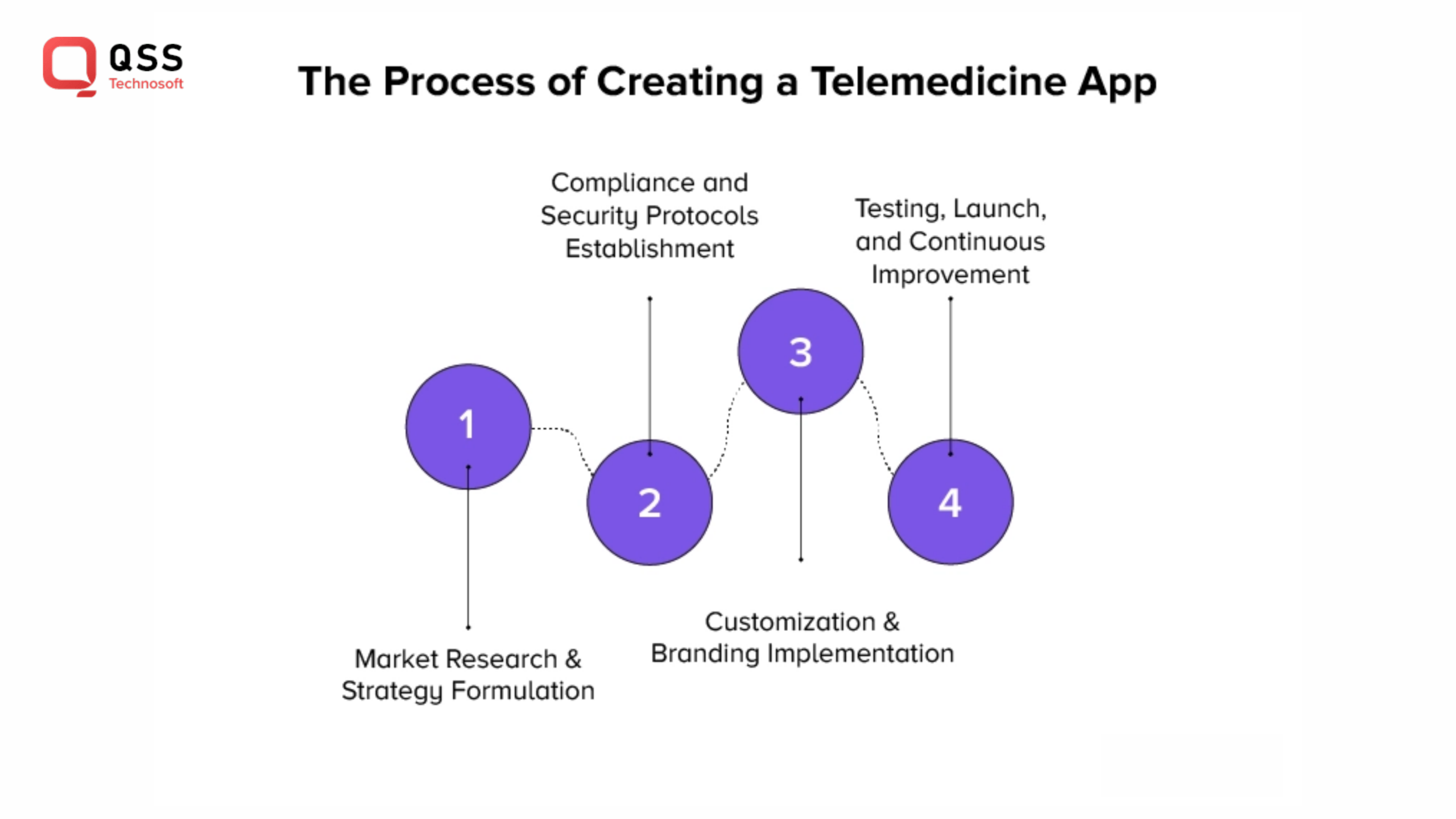
1. Development Team
The composition of your development team significantly influences costs. Hiring experienced developers, UI/UX designers, project managers, and quality assurance professionals contributes to the overall budget. Costs may vary depending on whether you opt for in-house development or outsource to a third-party vendor.
2. Technology Stack
The choice of technology stack affects development costs. Licensing fees for certain software, the use of premium APIs, and the need for specific development tools can contribute to expenses. Open-source solutions may mitigate some costs, but careful consideration is needed to ensure compatibility and security.
3. Features and Complexity
The complexity and number of features integrated into the app directly impact development costs. Basic telemedicine apps with essential features will be more cost-effective, while advanced solutions with additional functionalities such as AI-driven diagnostics or wearables integration will incur higher expenses.
4. Regulatory Compliance
Ensuring compliance with healthcare regulations requires additional resources and expertise. The cost of legal consultations, implementation of security measures, and adherence to industry standards contribute to the overall development budget.
5. Maintenance and Updates
Post-launch, ongoing maintenance and updates are essential to address issues, implement new features, and stay compliant with evolving regulations. Budgeting for continuous support and improvements is crucial for the long-term success of the telemedicine app.
Challenges and Considerations
1. Regulatory Challenges
Navigating the complex regulatory landscape of healthcare can be challenging. Stay informed about the legal requirements and compliance standards in different regions to avoid regulatory pitfalls.
2. Integration with Existing Systems
Healthcare providers often use existing systems for electronic health records and other processes. Ensuring seamless integration with these systems is crucial for the smooth operation of the white-label telemedicine app.
3. Data Privacy and Security
Maintaining the privacy and security of patient data is a top priority. Regularly update security measures, conduct audits, and stay informed about evolving cybersecurity threats.
4. User Adoption
Encouraging healthcare providers and patients to adopt the new telemedicine platform may pose a challenge. Offering incentives, providing training, and highlighting the benefits of the app can boost user adoption rates.
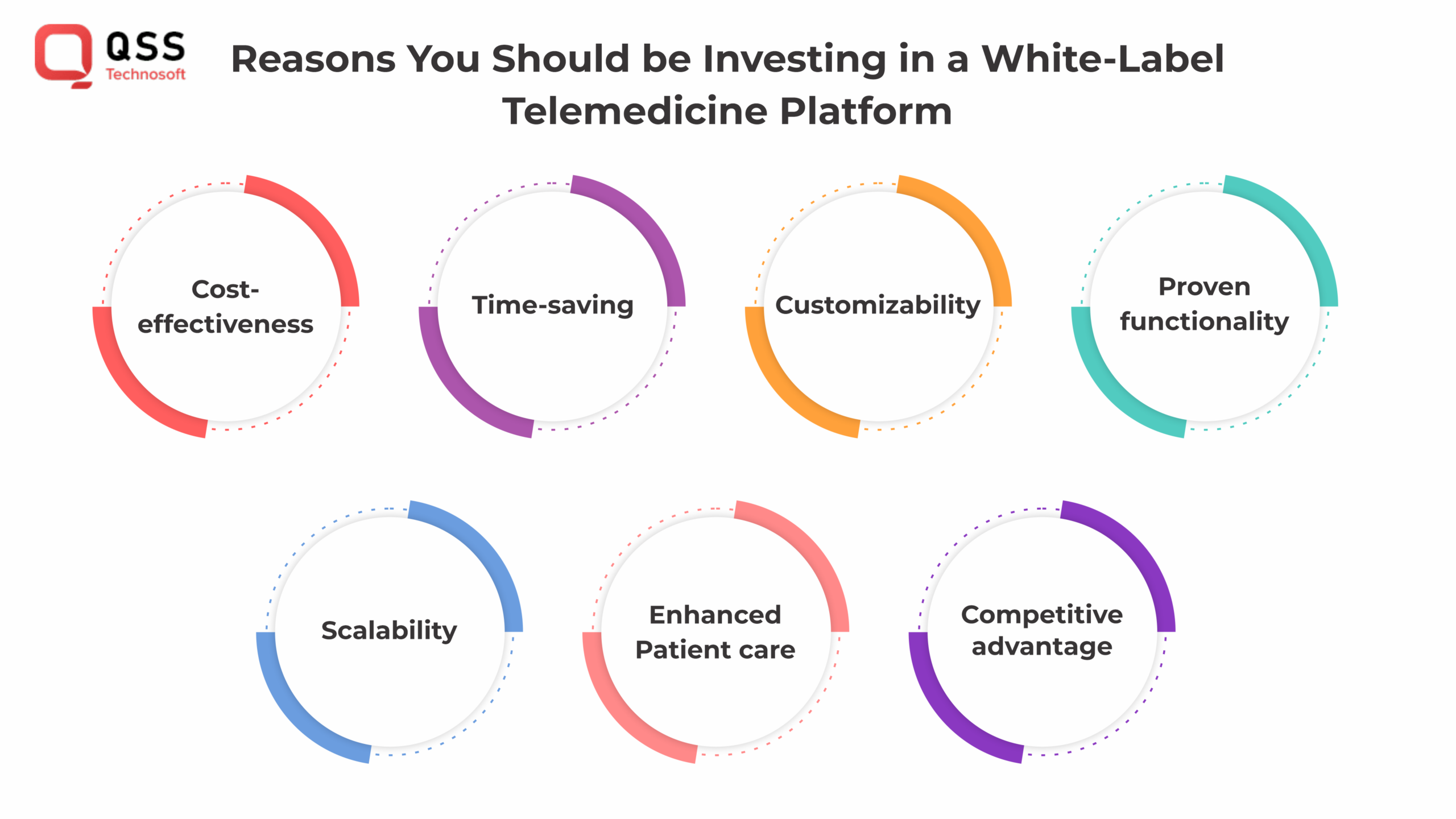
Conclusion
The creation of a telemedicine app, under a brand name is a step in transforming healthcare delivery. As the industry progresses it becomes increasingly important to embrace technology for accessibility and convenience.
To successfully develop a telemedicine app that caters to the needs of patients and healthcare professionals developers and stakeholders in the healthcare sector must understand the development process, incorporate features and carefully consider associated costs.
As telemedicine gains traction those who are committed to pushing the boundaries of innovation in health hold the key to unlocking the future of healthcare.
Why should you choose QSS Technosoft for developing a White-Label Telemedicine App?
At QSS Technosoft, we adopt an utmost commitment to delivering high-quality healthcare services to people in the most convenient way possible. To further our passion, we are proud to present our specialized white-label telemedicine app development services that can be customized based on your requirements.
Our top-notch developers craft telemedicine apps with easy navigation and guaranteed privacy and security. Our greatest strength lies in our meticulousness; our experts remain informed on the never-ending changes in the health industry to ensure that the apps are in tandem with every trend and regulation.
Your medical data is of utmost importance to us, that is why we track every step taken to maintain the quality of its safety and create data backup systems. As much as we pride ourselves in security, we also guarantee that our white label telemedicine app development services are designed to be social media and history app compatible while displaying your branding. Ultimately, these user-friendly services become the perfect platform for convenient and accessible healthcare practices.
Frequently Asked Questions (FAQs) – Developing a White-Label Telemedicine App
What is a white-label telemedicine app, and how does it differ from other telemedicine solutions?
A white-label telemedicine app is a customizable solution that can be branded and resold by different healthcare organizations. It allows businesses to offer telehealth services under their own name and branding, providing a tailored experience for their users.
Why should I consider developing a white-label telemedicine app?
Developing a white-label telemedicine app offers the advantage of a quicker time-to-market, as you can leverage an existing platform’s infrastructure. It also allows you to establish your brand in the telehealth space without the need for extensive development from scratch.
What features should I prioritize when developing a telemedicine app?
Key features include secure user authentication, appointment scheduling, high-quality video conferencing, secure messaging, EHR integration, payment gateways, and analytics tools. Prioritize features based on your target audience and the specific needs of healthcare professionals and patients.
How can I ensure the security and privacy of patient information in my telemedicine app?
To ensure the security and privacy of patient information, implement end-to-end encryption for messaging and video calls. Adhere to healthcare data protection regulations such as HIPAA and conduct regular security audits and updates to address potential vulnerabilities.
What are the legal considerations when developing a telemedicine app?
Legal considerations include compliance with healthcare regulations in your target regions, data protection laws, and obtaining necessary certifications. Consult with legal experts to ensure that your app meets all relevant regulatory requirements.
How can I choose the right white-label telemedicine platform for my app?
When selecting a white-label telemedicine platform, consider factors such as scalability, customization options, integration capabilities with EHR systems, and compliance with healthcare regulations. Choose a platform that aligns with your app’s specific requirements and long-term goals.
What is the expected timeline for developing a white-label telemedicine app?
The development timeline can vary based on factors such as app complexity, features, and the development team’s expertise. On average, developing a telemedicine app can take anywhere from a few months to a year. It’s essential to plan for testing, quality assurance, and post-launch support phases.
How can I market my telemedicine app effectively?
Develop a comprehensive marketing strategy that includes digital marketing channels, social media, and partnerships with healthcare providers. Highlight the app’s key features, benefits, and ease of use. Consider offering promotional incentives to attract both healthcare professionals and patients.
What are the ongoing costs associated with maintaining a telemedicine app?
Ongoing costs include post-launch support, updates, and maintenance to address any issues, implement new features, and ensure compliance with evolving technology and regulations. Budget for these ongoing expenses to ensure the long-term success of your telemedicine app.
How can I stay informed about changes in the telemedicine industry and technology trends?
Stay engaged with industry publications, attend conferences, and participate in relevant webinars and forums. Regularly update your app to incorporate the latest technological advancements and ensure it remains competitive in the evolving telehealth landscape.
We are proud to mention that our work has been recognized by leading B2B reviews and research platforms like GoodFirms, Clutch, MirrorView, and many more.
